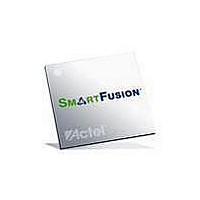A2F500M3G-FGG256 Actel, A2F500M3G-FGG256 Datasheet - Page 104

A2F500M3G-FGG256
Manufacturer Part Number
A2F500M3G-FGG256
Description
FPGA - Field Programmable Gate Array 500K System Gates
Manufacturer
Actel
Datasheet
1.A2F500M3G-FGG256.pdf
(192 pages)
Specifications of A2F500M3G-FGG256
Processor Series
A2F500
Core
ARM Cortex M3
Number Of Logic Blocks
24
Maximum Operating Frequency
100 MHz
Number Of Programmable I/os
117
Data Ram Size
64 KB
Delay Time
50 ns
Supply Voltage (max)
3.6 V
Supply Current
2 mA
Maximum Operating Temperature
+ 85 C
Minimum Operating Temperature
0 C
3rd Party Development Tools
MDK-ARM, RL-ARM, ULINK2
Development Tools By Supplier
A2F-Eval-Kit, A2F-Dev-Kit, FlashPro 3, FlashPro Lite, Silicon-Explorer II, Silicon-Sculptor 3, SI-EX-TCA
Mounting Style
SMD/SMT
Supply Voltage (min)
1.5 V
Number Of Gates
500000
Package / Case
FPBGA-256
Lead Free Status / RoHS Status
Lead free / RoHS Compliant
Available stocks
Company
Part Number
Manufacturer
Quantity
Price
Company:
Part Number:
A2F500M3G-FGG256
Manufacturer:
Microsemi SoC
Quantity:
10 000
Company:
Part Number:
A2F500M3G-FGG256I
Manufacturer:
Microsemi SoC
Quantity:
10 000
Part Number:
A2F500M3G-FGG256I
Manufacturer:
MICROSEMI/美高森美
Quantity:
20 000
SmartFusion Development Tools
SmartFusion Ecosystem
3 - 2
The MSS configurator includes the following:
The SoC Products Group has a long history of supplying comprehensive FPGA development tools and
recognizes the benefit of partnering with industry leaders to deliver the optimum usability and productivity
to users. Taking the same approach to processor development, The SoC Products Group has partnered
with key industry leaders in the microcontroller space to provide a robust solution that can be easily
adopted by existing embedded developers and has an easy learning path for FPGA designers. The SoC
Products Group is partnering with Keil and IAR to provide software IDE support to SmartFusion
Designers. In addition, Micrium provides support for SmartFusion with its new µC/OS-III,™ TCP/IP,™
and µC/Probe™ products
Support for the SoC Products Group device and ecosystem resources is represented in
Figure 3-2 • SmartFusion Ecosystem
Starting from the base up, the ARM
hardware abstraction layer (HAL) is built on top of the SmartFusion hardware platform. Each of the
peripherals has its own driver, whether it is hard IP or soft IP added in the FPGA fabric. Then on top of
that we will work with third party real-time operating system (RTOS) vendors for OS, protocol stacks, and
interfaces. A designer can add a custom application with all, some, or none of the layers below.
Application Code
•
•
•
•
•
Physical Layer
Middleware
A simple configurator for the embedded designer to control the MSS peripherals and I/Os
A method to import and view a hardware configuration from the FPGA flow into the embedded
flow containing the memory map
Automatic generation of drivers for any peripherals or soft IP used in the system configuration
Comprehensive analog configuration for the programmable analog components
Creation of a standard MSS block to be used in SmartDesign for connection of FPGA fabric
designs and IP
Drivers
RTOS
HAL
(Table 3-1 on page
RTOS – Real-Time Operating System
Protocol Stacks, File Systems,
Hardware Abstraction Layer
Target Hardware Platform
®
Application Layer
Cortex™ Microcontroller Software Interface Standard (CMSIS)
Interfaces
R e vi s i o n 6
3-3).
Customer Alogorithms/
Intellectual Property
Third Party
TCP, HTTP, SMTP
DHCP, LCD
Third Party µC/OSII
Actel or Third Party
For Hard IP or Soft IP
I
RAM, 10/100, Timer
Actel CMSIS-based
Actel SmartFusion
2
C, SPI, UART, NVM
Figure
3-2.












